Making sure funds are available for retirement is one of our biggest fears as we age. And if you’re considering ETFs, then what are the best retirement ETFs to buy now? Check out some of our best picks for income potential to help alleviate the stress.
Best Retirement ETFs
SPDR S&P 500 ETF (NYSEARCA: SPY)
Among ETFs for retirement, the SPDR S&P 500 is the most quintessential.
It is the oldest ETF, created in 1993 to follow the S&P 500 index. The fund remains up nearly 800% from its inception point almost 30 years ago.
Asset allocation comes from a wide range of sectors, with information technology leading the charge.
It is followed somewhat closely by health care, financials, and consumer discretionary stocks. Also included, though at smaller capacities, are energy, materials, and real estate.
Like the index fund, SDPR’s top holdings come from established companies with a history of success.  Apple (NASDAQ: AAPL) accounts for 6.75% of the weight of the fund, with Microsoft Corporation (NASDAQ: MSFT) making up 5.41% and Amazon.com Inc. (NASDAQ: AMZN) rounding out the leaders at 2.59%.
Apple (NASDAQ: AAPL) accounts for 6.75% of the weight of the fund, with Microsoft Corporation (NASDAQ: MSFT) making up 5.41% and Amazon.com Inc. (NASDAQ: AMZN) rounding out the leaders at 2.59%.
Assets under management eclipse $376 million, and the fund boasts a market cap above the $355 billion mark.
The large liquidity here makes SPY easy to trade, and a small 0.09% expense ratio won’t significantly affect returns.
By mirroring the S&P 500, this ETF isn’t going to do anything crazy.
Shares may be down right now due to the overall downturn of the market, but its long-term approach makes SPY a solid retirement investment.
Related: The 6 Best Entertainment ETFs To Buy Now
The 6 Best Railroad ETFs To Buy Now
Vanguard International High Dividend Yield ETF (NASDAQ: VYMI)
The Vanguard International High Dividend Yield ETF sweeps the international markets for stocks with above-average dividend yields.
It has tracked the performance of the FTSE All-World ex US High Dividend Yield Net Tax Index since its inception in early 2016.
Over 40% of individual stocks come from Europe, with the Pacific region accounting for roughly a quarter.
Most of the remainder pulls from emerging markets worldwide, with the United States only responsible for 9%.
No individual stock carries heavy weight in VYMI.

Pharmaceutical company Roche Holding AG (SWX: ROG) retains the top spot at 2.1%, followed by Shell PLC (NYSE: SHEL) at 2.02%, and Toyota Motor Corp (NYSE: TM) holds 1.68%.
Shareholders receive distributions quarterly from dividends. The fact that it only chooses stocks with a high dividend makes it a solid pick for a retirement portfolio. Dividends from September’s payout were 5.47%.
The fund took a hard hit at the onset of the Covid pandemic in 2020 but recovered to even higher heights within a year.
It has been trading at a discount throughout 2022, spelling a potential opportunity for higher growth alongside dividend income.
Investing in shares of VYMI has a 0.22% expense ratio, much lower than many comparable ETFs for retirement. You’ll feel a little safer with passive income coming in, knowing you’re not losing much on the dollar.
The first iShares ETF on our list deals exclusively with smaller companies and is based on the Russel 2000 Index.
It contains 1,962 small-cap stocks that amount to over $55 billion in net assets under management.
Exposure is pretty well split between financials, health care, industrials, and information technology at the top.
The fund also holds stocks from energy, real estate, materials, and consumer staples.
With a laundry list of companies in the iShares Russell 2000 ETF, there’s not a huge weight difference among top holdings.
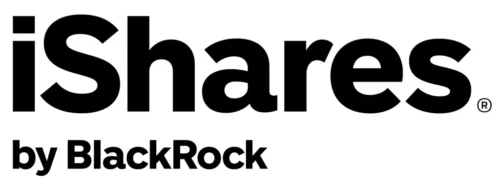
Shockwave Medical Inc. (NASDAQ: SWAV) weighs in at 0.37%, with energy company Matador Resources (NYSE: MTDR) and Emcor Group Inc. (NYSE: EME) at 0.32%.
The share price has risen over 250% since the fund’s inception in 2000 despite shares dropping $40 this year.
It still grows on average 7% per year, perfect for long-term investing goals.
If you’re adding IWM to your portfolio, you can also expect a quarterly dividend to supplement growth.
The current payout sits at 1.29%, and a management fee of 0.19% will be deducted from your overall returns as the cost of doing business.
Real Estate Select Sector SPDR Fund (NYSEARCA: XLRE)
The Real Estate Select Sector SPDR Fund is a more budget-friendly ETF with a NAV currently in the $37 range.
It unsurprisingly follows the Real Estate Select Sector Index and seeks to capture an accurate representation of the S&P 500’s real estate sector.
Being tied to the S&P, all holdings within come from the US markets. About 97% of assets are real estate investment trusts (REITs), with the remaining 3% being from real estate management and development.
The two highest-weighted companies each makeup approximately 11% of the ETF.
Prologis, Inc. (NYSE: PLD) is a logistics and warehouse REIT and American Tower (NYSE: AMT) owns and operates wireless and broadcast communications infrastructures. 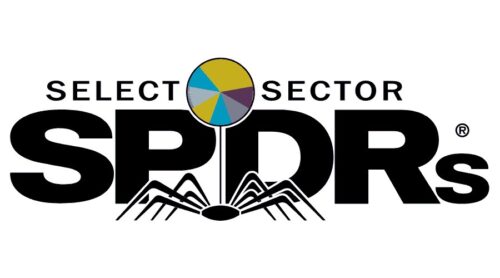 Equinix Inc. (NASDAQ: EQIX), specializing in data centers, rounds out the third spot at 6.65%.
Equinix Inc. (NASDAQ: EQIX), specializing in data centers, rounds out the third spot at 6.65%.
REITs often contain hundreds of properties for diversity and stability. XLRE has 31 REITs in its portfolio, in theory reducing volatility that much more.
Additionally, REITs are required to pay out dividends, and this ETF follows through with payouts of its own.
Averaging between 3% and 4%, rates for December were announced to be 3.67%.
A low expense ratio of 0.10% means you aren’t losing a massive chunk of income annually, either.
Schwab U.S. Dividend Equity ETF (NYSEARCA: SCHD)
The Schwab U.S. Dividend Equity ETF is another great dividend option for a retirement portfolio.
It contains all 100 holdings in the Dow Jones U.S. Dividend 100 Index, known for quality dividends.
With an expense ratio of 0.06%, the fund is one of the lowest in terms of fees.
Of stocks contained within, the focus leans heavily on large companies on the value side of the spectrum. Net assets total $42 billion.
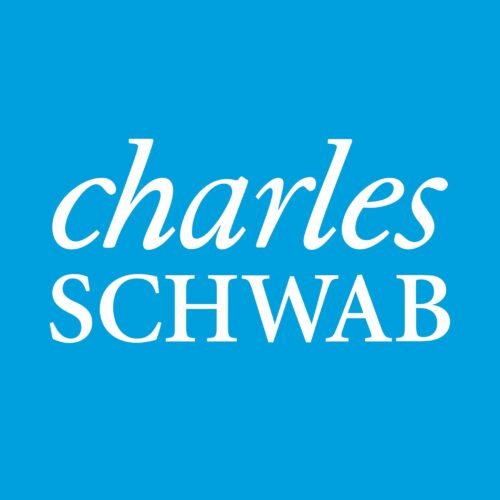
These companies are spread across many sectors, with information technology and financials at the forefront. Weightings trend downward when reaching customer staples, health care, and industrials.
Pharmaceutical company Merck & Co Inc. (NYSE: MRK) has top honors, with 4.3% of the portfolio. Pfizer Inc. (NYSE: PFE) and PepsiCo Inc. (NASDAQ: PEP) aren’t far behind.
Schwab’s ETF hasn’t been hit too hard by the 2022 recession, down just 4% from last year. In addition to being suitable for dividend income, SCHD traditionally does well long-term.
Current quarterly dividends are 3.27%, amounting to $2.48 per share in 2021. That passive income could be dropped right into a retirement account.
Vanguard Short-Term Corporate Bond ETF (NASDAQ: VCSH)
Stocks aren’t the only player in the retirement income game. Bonds can help with retirement savings as well.
Although there are no guarantees in stocks or bonds, bonds tend to draw much lower risk for a smaller reward.
The Vanguard Short-Term Corporate Bond ETF seeks to capitalize on that, lumping several bonds into one convenient package.
This particular fund has some of the lowest risk performance and only requires a minimum investment of $1 to buy in.
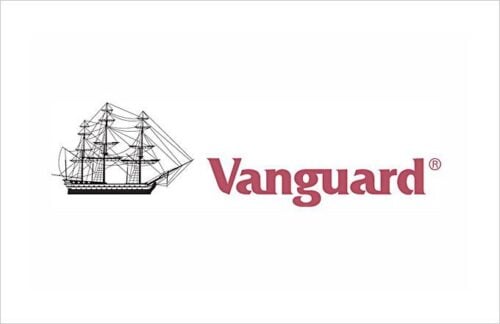
VCSH uses the Bloomberg US 1-5 Yr Corporate Index as its standard, maintaining an average maturity of 3.1 years. Yield at maturity holds just shy of the 6% mark.
The ETF currently holds 2,370 unique bonds, with total net assets above $45 billion. Credit quality for bonds within is almost entirely A or BBB.
If bond maturity wasn’t enough, the ETF pays out a dividend yield of around 2.2% every month. You’ll barely feel the 0.04% from annual expenses.
While bonds have had a lousy year thanks to rising inflation, talks of cooling rates paint the security in a good light once again.
Now could be the perfect time to bring in bonds for your retirement fund.
Are Retirement ETFs a Good Investment?
Using ETFs for retirement income has all the trappings of a solid investment strategy.
These funds often target indexes with slower, long-term growth potential. Many also pay out quarterly dividends for an added source of retirement income.
Good retirement portfolios should have plenty of diversified exposure, which can be a drag with common stocks. You should be able to enjoy retirement, and not have to monitor investments all the time.
ETFs solve that problem since they cover a ton of securities within a single fund. You don’t even need to go big.
A handful of the right picks can lower volatility and risk for your future funds. Best of all, there’s almost no maintenance.
It’s also super easy to find an ETF in your price range. There may be big ones like the SPDR S&P 500 ETF, but there are hundreds more to accommodate your investment budget.
There are fees associated with ETFs, but many exchange-traded funds are inexpensive. Most of the top picks on our list take less than 0.1% of your returns off the top.
We feel any of the ETFs above could be an excellent addition to your retirement portfolio. But as with all investments, be sure to do your research before diving in.
Retirement ETFs FAQ
How Many ETFs Should You Have in a Retirement Portfolio?
Between 4 and 10 ETFs are typically best for a future retirement fund. Just make sure you have enough diversification to handle hurdles along the way.
Are Mutual Funds or ETFs Better for Retirement?
Both mutual funds and ETFs can play a role in a retirement strategy. If you have to worry about taxes, ETFs are more efficient.
Should You Hold ETFs Long-term?
ETFs work best if allowed to grow over the long term. Many carry dividend stocks that continue paying passive income over time.
What is the Best Portfolio for Retirement?
Generally speaking, retirement portfolios should hold a majority of stocks with some bonds on the side. You can get both of these through ETFs without the hassle of constant management.
What ETFs Should I Invest in for my IRA?
We believe any of the above ETFs can make an excellent addition to an IRA. The best options are designed for long-term growth.
You might also like:
The 7 Best Cybersecurity ETFs To Buy Now

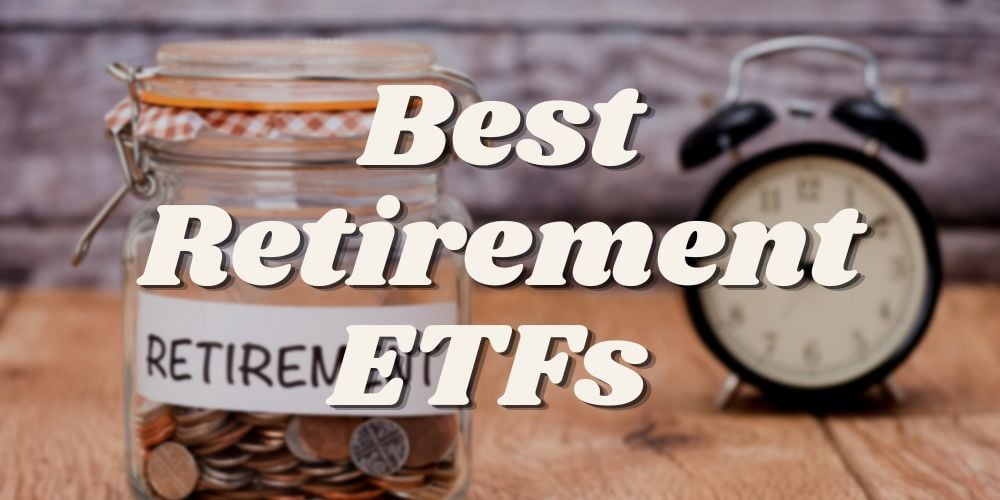
 Tags:
Tags:










